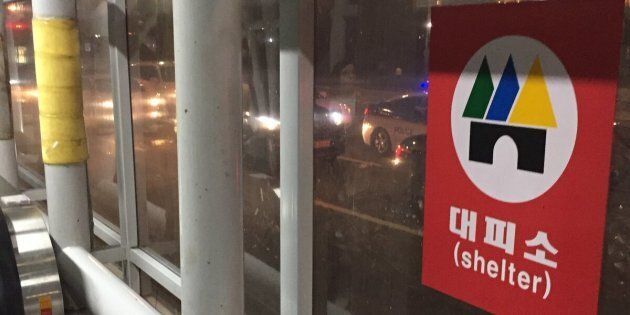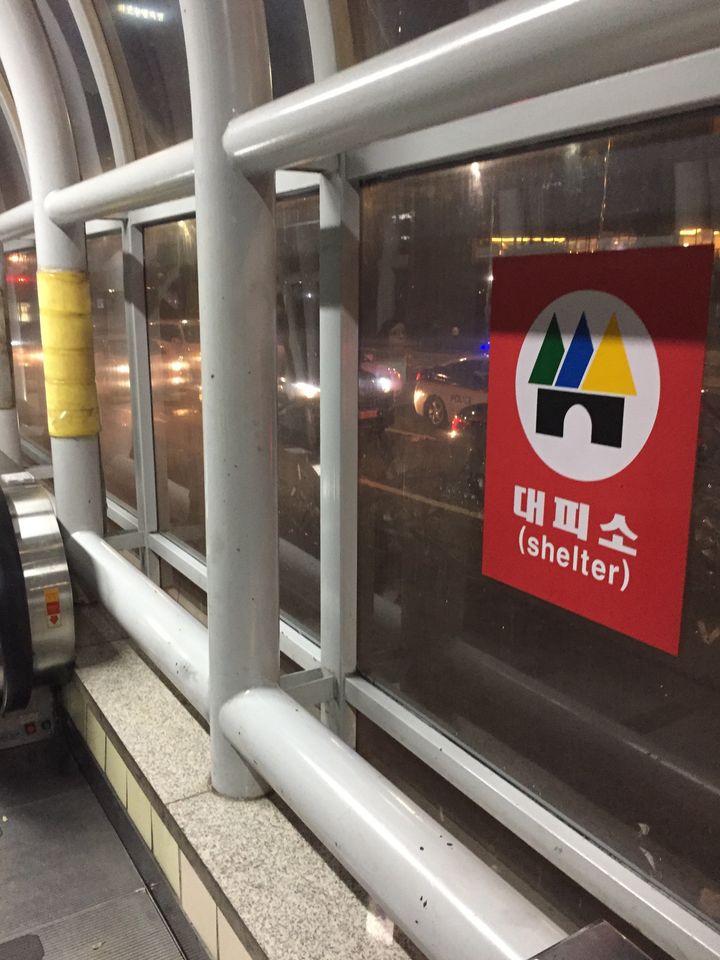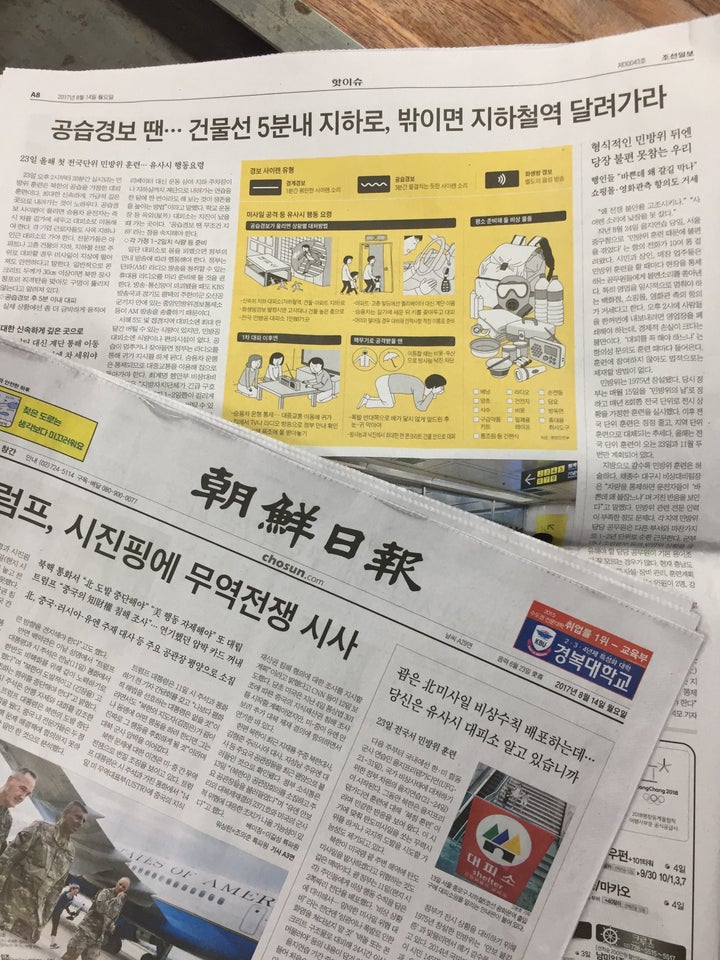

SEOUL ― They are tacked to doors outside thousands of office complexes, apartment buildings and subway stations here ― simple but bright red signs bearing the word “shelter” in Korean, Chinese and English. The panels, which direct residents to one of the South Korean capital’s 3,200 emergency bomb shelters should North Korea ― a mere 35 miles away ― decide to launch any of its conventional artillery southward.
After nearly seven decades of conflict between the North and South, many of the evacuation centers go unnoticed, and city officials say74 percent of Seoul residents aren’t sure where their nearest one is. Office workers often don’t know what the signs mean or even that their own buildings are listed as emergency evacuation points in acomprehensive government database.
In any conflict with Pyongyang, analysts say, Seoul is expected to be among the first, and most vulnerable, targets. North Korea is thought to have thousands of conventional arms ―cannons and rocket launchers ― buried in the hills north of the Demilitarized Zone that can be fired up to 37 miles into South Korea, able to reach much of Seoul and its 10 million inhabitants.
The North’s leader, Kim Jong Un, and U.S. President Donald Trump traded a series of increasingly bombastic statements last week after Trump promised “fire and fury” should Kim keep up the country’s rapidly advancing nuclear weapons program. North Korea released its own, albeit expected, threats before Trump said his earlier statements might not have been “tough enough.” U.S. officials later scrambled to rein in the president’s comments and said armed conflict was a last resort.
Kim Sung-min, an official on Seoul Metropolitan Government’s civil defense management team, said that as of Aug. 10 there were 3,257 shelters in the city, but he added they were equipped to withstand conventional weaponry, not nuclear or chemical attacks. The term “shelter” is itself a generality and can lead to a parking garage, train platform or storage area as long as it’s underground and at least 1,000 square feet.

In addition to the signs, government workers are expected to help lead citizens to the shelters in case of an attack, Kim explained. “If we had an emergency situation, civil servants would be placed to let people know where to evacuate,” he said, noting that “every local government has an alarm system as well.”
That systemwill be tested Aug. 23 as part of a nationwide preparation drill. But many of Seoul’s emergency shelters lie beneath private buildings whose residents often see such procedures as annoying and tedious.
“Since the training is not compulsory for private buildings and the residents get annoyed when we start the alarm, we usually try to cut it short,” said Park Jong-sun, a member of management staff for the building occupied in part by HuffPost Korea. “If there’s a fine for not doing it thoroughly, we’d run it, but there has been no government regulation.”
Ahn Jong-min, an administrative manager at a government community center for Seoul’s Ahyeon neighborhood, said if North Korea were to attack, there’s “not much” government services could do, aside from helping people prepare.
“If a war broke out, Korean military would take the controls and handle the situation,” Ahn said. “In other words, we don’t have a field manual for potential war. It will all depend on the situation.”
“We are prepared for flood or fire damage, but I think a war is a completely different situation,” he said. He stressed that the Seoul metropolitan government hasa thorough website that offers safety guidelines andan app that can direct residents to the nearest shelter.
When asked if anyone had inquired recently about the nearest shelter or emergency procedures, Ahn said no one had come in to ask.

Despite the apparent lack of knowledge about the location and use of shelters, government officials and local media appear to have recently been treating the issue with more seriousness. South Korea’s conservative Chosun Ilbo, the country’s largest newspaper, rana front-page story on emergency shelter awareness on Monday morning. The story encouraged residents to plan to take shelter in 5 minutes or less should an emergency alert sound.
“If the North Koreans shoot missiles or cannons, the time it takes for the shells to fly to Seoul is about 2 to 6 minutes, so we should take shelter in less than 5 minutes after the air raid warning,” an official at the country’s alarm control station told Chosun Ilbo.
In July, Reuters reported that Seoul had handed out 34,000 paper fans with information about bomb shelters. Chosun Ilbo reported Monday there were plans to distribute up to 300,000 leaflets with similar information in coming weeks.
“We always put every effort to promote this information in various ways to make sure people know exactly how to behave in that kind of situation,” Kim, the civil defense official, told HuffPost.
But many in Seoul simply don’t seem to believe a direct attack from North Korea is imminent, despite the escalating war of words.
“I am not worried about North Korea. At all,” Frank Scott, a 67-year-old American who retired to Seoul, said Sunday. “The country’s been living under threats and bellicose statements for 70 years. Nothing’s going to happen.”
HuffPost Korea’s Julie Yoon and Wan Heo contributed to this report.
